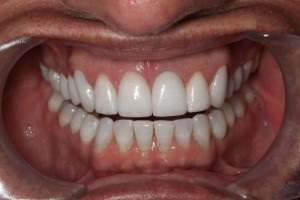by Dr. Jason Olitsky
 When you are evaluating the esthetic principles inherent to successful smile design, there are 7 violations that are common and undermine the success of the finished cosmetic case. Here is one of my top clinical tips for maximizing the outcome of your esthetic cases by instituting a knowledge of tooth proportions into your approach to cosmetic dentistry in the practice.
When you are evaluating the esthetic principles inherent to successful smile design, there are 7 violations that are common and undermine the success of the finished cosmetic case. Here is one of my top clinical tips for maximizing the outcome of your esthetic cases by instituting a knowledge of tooth proportions into your approach to cosmetic dentistry in the practice.
The Importance of Ratios
Creating a beautiful smile is dependent on several factors, one of which is utilizing an understanding of the dominance of the central incisors. Instead of approaching the ideal smile with an overemphasis on golden proportions, as many dentists have done in the past, a potentially artistic approach is to rely on less regimented proportion based designs.
When determining the ratios for the centrals, it’s possible to either make them appear too long and narrow or too wide and fat. To remedy this, maintain a similar width to height ratio as the normal one found in an unworn central incisor tooth: around 80%.
Just as with leaving too much space between the buccal aspects of the teeth and the cheek, over-lengthening or narrowing the teeth compared to their actual width can create narrow teeth. This can occur when planning length or width changes for esthetics or correcting crowding of the incisors.
Narrow teeth cause multiple issues in smile design:
- A loss of central dominance.
- The Two front teeth appear to have the same width as the laterals.
- Creates an unesthetic and artificial looking smile.
To maintain room for the central if short on space, make the laterals narrower or slightly rotated and maintain central dominance.
A Good Rule of Thumb
The laterals: 65% the width of the centrals
The canines: 75% the width of the laterals
Bonus Tip
Take advantage of programs like Keynote or PowerPoint in your approach to well-proportioned smile design. Overlay lines with constrained proportions on top of pictures of patients’ teeth.
This helps with anything from measuring the width and heights of teeth to finding their percentages. The knowledge you receive from this approach can also be useful in communicating exact numbers to the laboratory so that they can help maintain central dominance during pre-planning.